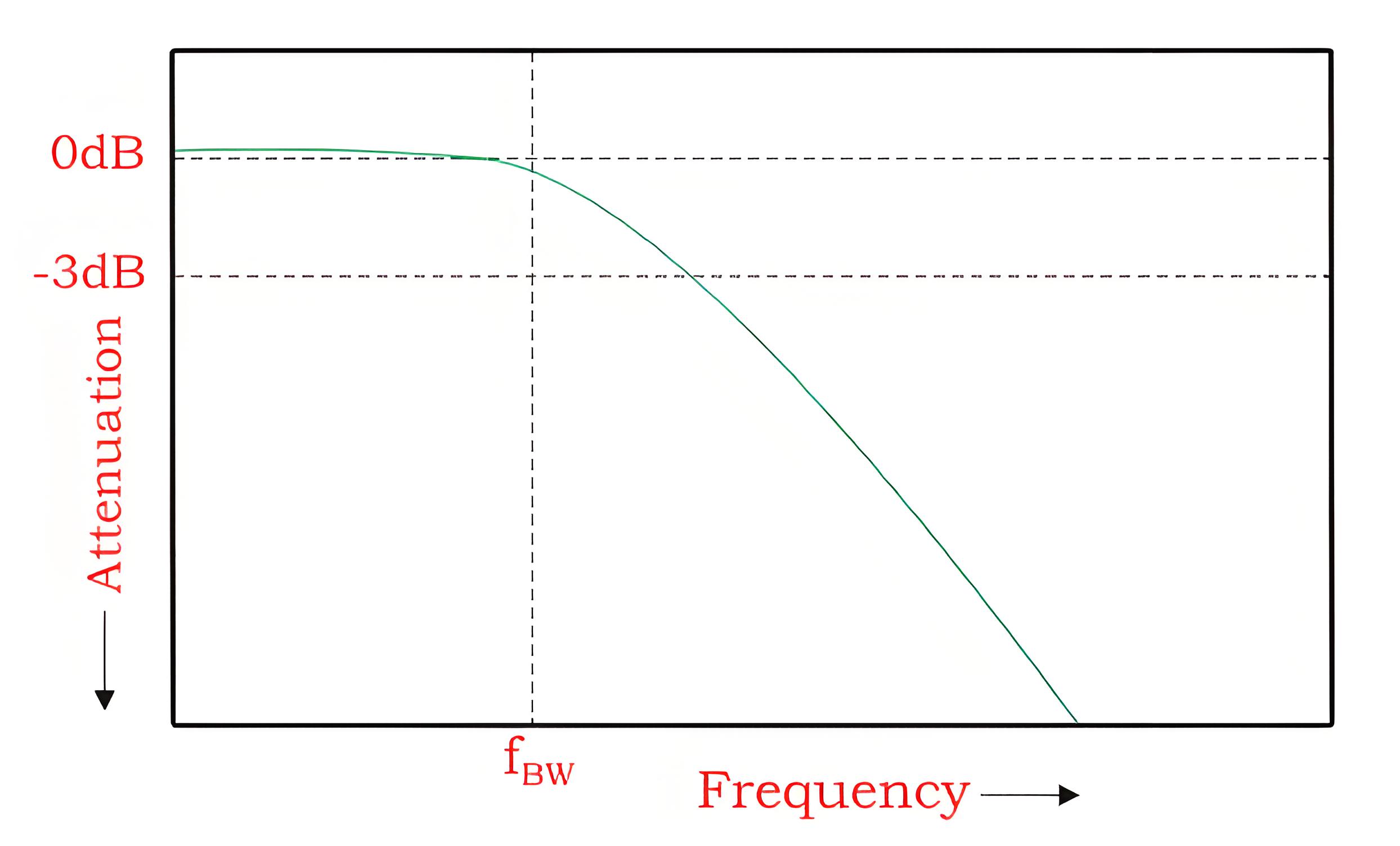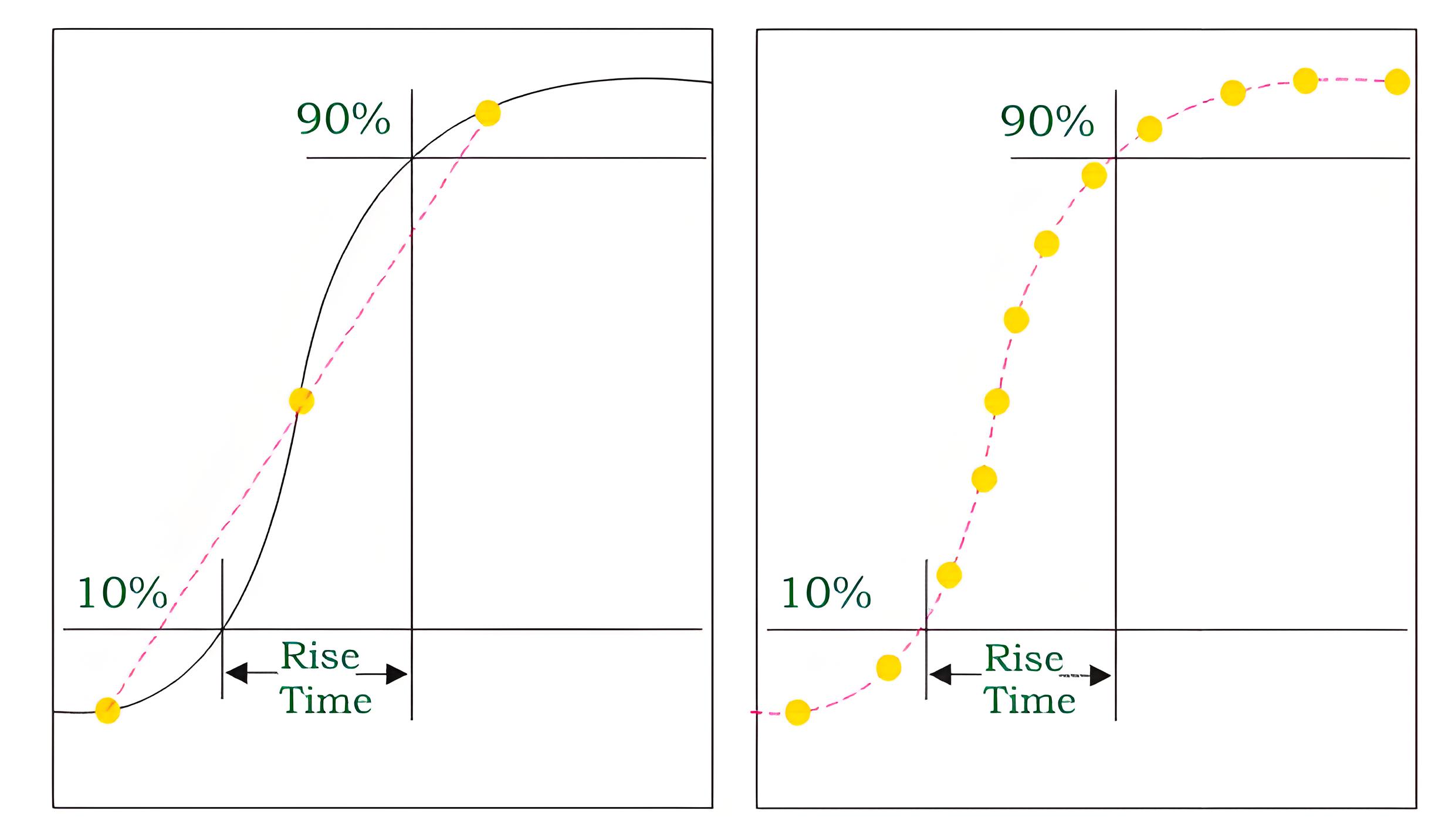Frequency Limitation of an Oscilloscope
Bandwidth Limit
Oscilloscopes, like multimeter, are essential tools for understanding circuits. However, they have limitations. To use an oscilloscope effectively, it’s crucial to know these limitations and find ways to address them.
A key feature of an oscilloscope is its bandwidth. Bandwidth determines how fast it can sample analog signals. What is bandwidth? Many think it’s the maximum frequency a scope can handle. Actually, bandwidth is the frequency where a signal’s amplitude drops by 3dB, or 29.3% below its true amplitude.
At the maximum rated frequency, the oscilloscope shows 70.7% of the signal’s actual amplitude. For example, if the actual amplitude is 5V, the scope will display it as about 3.5V.

Oscilloscopes with a bandwidth of 1 GHz or less have a Gaussian or low-pass frequency response, starting at one-third of the -3 dB frequency and gradually decreasing at higher frequencies.
Scopes with specification greater than 1 GHz shows a maximally flat response with a sharper roll-off near the -3dB frequency. The lowest frequency of oscilloscope at which the input signal is attenuated by 3 dB is considered as the bandwidth of the scope. The oscilloscope with a maximally flat response can attenuate in-band signals which are less as comparative to the oscilloscope with the Gaussian response and do more accurate measurements on in-band signals.
On the other hand, the scope with Gaussian response attenuated out-bands signals which are less comparative to the scope with the maximally flat response. It means that such scope has a faster rise time comparative to other scopes with same bandwidth specification. Rise time specification of a scope is closely related to its bandwidth.
A Gaussian response type oscilloscope will have a rise time of 0.35/f BW approximately based on a 10% to 90% criterion. A maximally flat response type scope has a rise time of 0.4/f BW approximately based on the sharpness of the frequency roll-off characteristic.
Rise time is the fastest edge speed an oscilloscope can display if the input signal has an infinitely fast rise time. Measuring this theoretical value is impossible, so it’s better to calculate a practical value

Precaution Required for Precise Measurements in Oscilloscope
The foremost thing that users must know is the bandwidth limitation of the scope. The bandwidth of the oscilloscope should be wide enough to accommodate the frequencies within the signal and display the waveform properly.
The probe used with the scope played an important role in the performance of the equipment. The bandwidth of the oscilloscope, as well as probe, should be in proper combination. Using an improper oscilloscope probe can spoil the performance of the entire test equipment.
To measure frequency as well as amplitude accurately, the bandwidth of both the scope and the probe attached to it are well above the signal you want to capture precisely. For example, if the required accuracy of amplitude is to ~1%, then berate factor of scope by 0.1x, that means 100MHz scope can capture 10MHz with a 1% error in amplitude.
One must take into consideration the correct triggering of the scope so that the resultant view of the waveform is much clearer.
Users should be aware of ground clips while taking high-speed measurements. The wire of the clip produces inductance and ringing into the circuit which affects the measurements.
The summary of the whole article is that for analog scope, the bandwidth of the scope is at least, three times higher than the highest analog frequency of the system. For the digital application, the bandwidth of the scope is at least, five times higher than the fastest clock rate of the system.
The Electricity Encyclopedia is dedicated to accelerating the dissemination and application of electricity knowledge and adding impetus to the development and innovation of the electricity industry.













